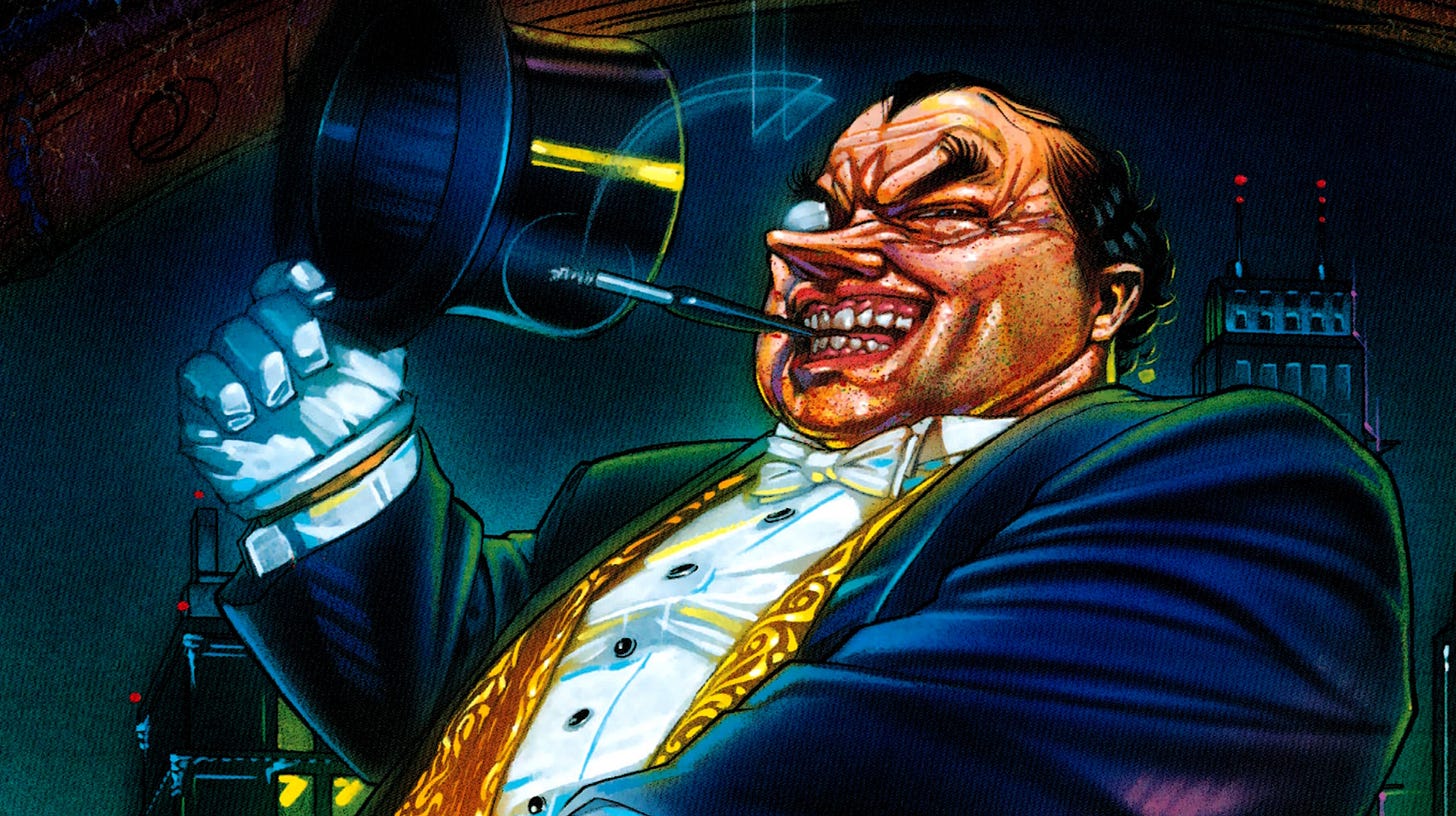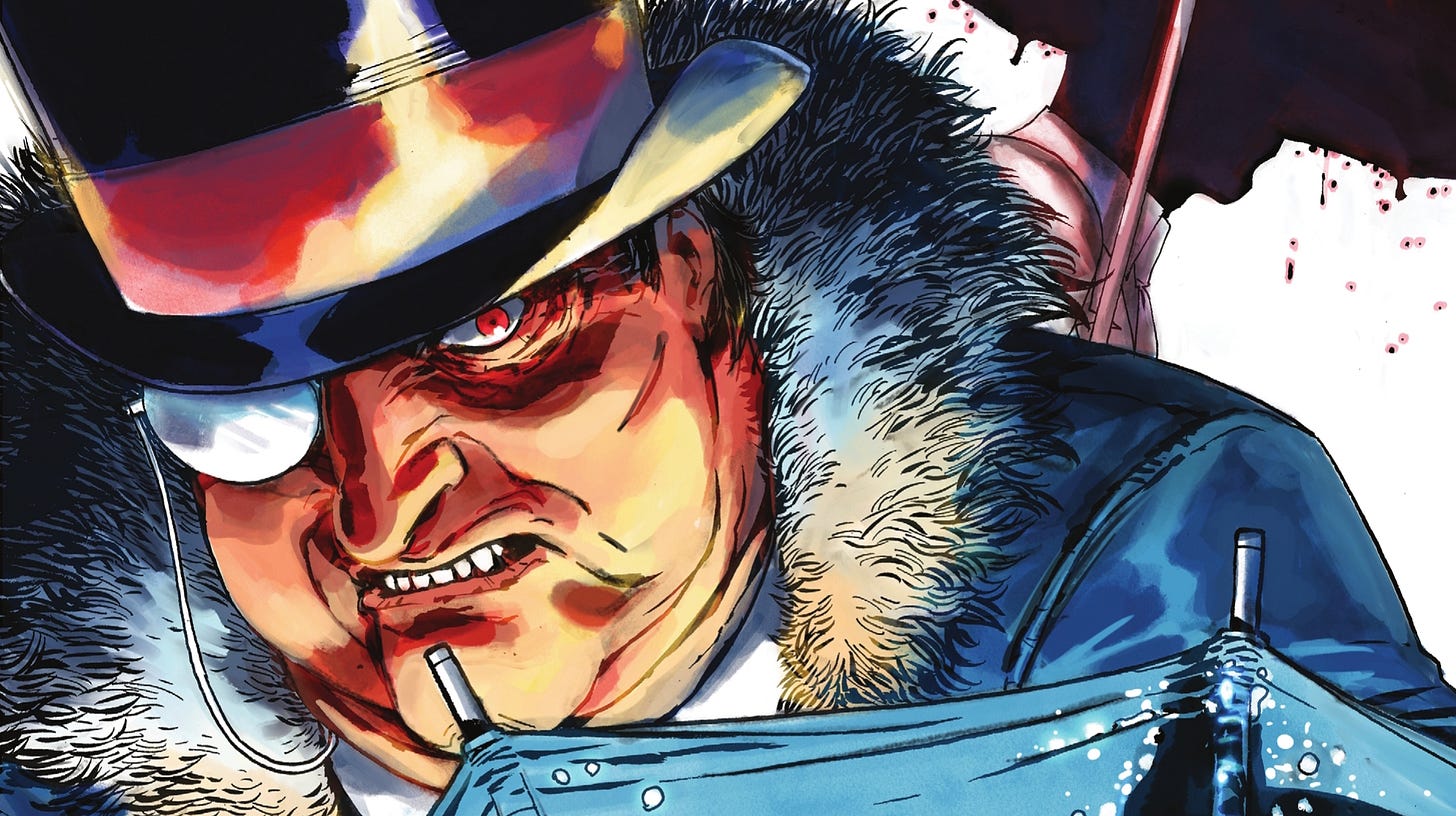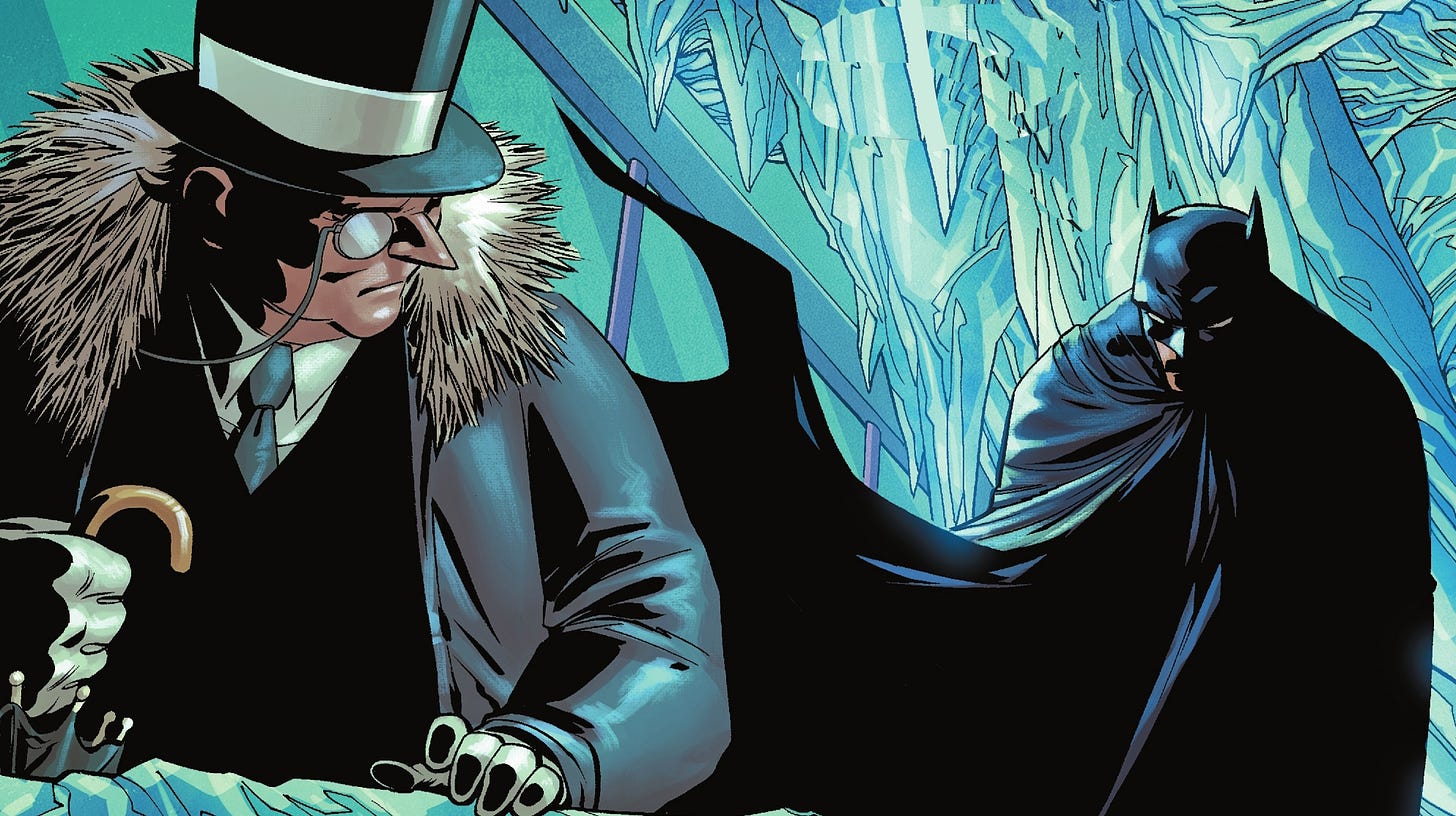Penguin: Gotham's Devious Crime Lord and Mastermind
Oswald Cobblepot, better known as the Penguin, is one of Batman's most enduring and unique adversaries in the DC Universe. He might have a comic appearance, but he is a serious crime boss.
The Penguin made his debut in Detective Comics #58 in 1941 as a quirky villain with a preference for bird-related crimes. Created by Bob Kane and Bill Finger, the Penguin's appearance that matched his name—short and rotund, with a distinctive beak-like nose. Initially depicted as a gimmicky thief who used trick umbrellas to commit his crimes, the Penguin quickly proved to be more than just a novelty villain. His intelligence, ambition, and strategic mind made him a formidable adversary for Batman, often outsmarting the Dark Knight and evading capture.
Oswald Cobblepot's origin story is steeped in tragedy and a deep desire for respect and power. Born into a wealthy family, young Oswald was often ostracized due to his unusual appearance and short stature. His overbearing mother, obsessed with birds, forced him to carry an umbrella everywhere he went—a quirk that would become his signature as the Penguin. After his family's fortune was lost, Oswald turned to a life of crime, seeking to reclaim his lost status and power through whatever means necessary.
The Penguin's relationship with Batman is one of complex antagonism. Unlike many of Batman's foes, who are driven by madness or a desire for chaos, the Penguin is primarily motivated by power and greed. He is a businessman at heart, using his criminal activities to amass wealth and influence in Gotham. His pragmatic approach makes him a unique villain in Batman’s rogues' gallery, as he often operates within the boundaries of the law while running his criminal empire from behind the scenes.
The Penguin isn’t beyond attempting to move into the spheres of legal success. In Batman: Penguin Triumphant (1992), the Penguin attempts to reinvent himself as a legitimate businessman, only to be drawn back into the criminal underworld. This story showcases the Penguin's struggle to balance his desire for respectability with his inherent criminal instincts, highlighting his complex nature as a character who is neither fully good nor completely evil.
The Penguin also shares a unique relationship with other members of Gotham’s underworld. As a crime lord, he often interacts with other villains, striking deals and forming alliances when it suits his interests. In the Gotham Underground miniseries (2007-2008), the Penguin’s cunning and strategic mind are on full display as he manoeuvres through a power struggle in Gotham’s criminal underworld following the disappearance of Batman and other key players. This storyline emphasizes the Penguin's ability to adapt and survive, showcasing his resilience and intelligence.
In the iconic Batman: The Long Halloween (1996-1997) by Jeph Loeb and Tim Sale, the Penguin makes significant appearances that reflect his status as a respected figure in Gotham’s underworld. His involvement in this noir-inspired murder mystery adds complexity and intrigue to the story. As a character, the Penguin moves between Gotham's elite and the criminal underbelly. He is part of both and belongs completely to neither.
A full explanation of the Penguin’s background is delivering in Penguin: Pain and Prejudice (2011) written by Gregg Hurwitz and illustrated by Szymon Kudranski. The story has been referred to as the Penguin’s version of A Killing Joke, the Alan Moore retelling of the Joker’s origin. In Pain and Prejudice, the Penguin's traumatic childhood is presented as a significant part in his evolution into one of Gotham's most feared crime lords. It presents a sometimes sympathetic view of Oswald Cobblepot, showcasing his pain and the psychological scars that drive his ruthless quest for power and revenge against those who wronged him. The series provides readers with a nuanced portrayal of the Penguin, highlighting his complexity as a character who is both a victim and a villain.
From his early beginnings a gimmick driven criminal, to a ruthless robber, the Penguin has evolved sophisticated crime lord. He is a relevant and compelling character in the Batman mythos, offering a different kind of threat to the Dark Knight. Unlike many of Batman's foes who rely on physical prowess or psychological games, the Penguin is a strategist, using his intellect, wealth, and connections to challenge Batman in unique ways.
Penguin: The King of Gotham's Underworld
The Penguin remains one of Batman’s most enduring adversaries because of his unique combination of intelligence, ruthlessness, and ambition. He is a villain who is as comfortable in a boardroom as he is in a dark alley, making him a versatile and unpredictable threat. His transformation from a bird-themed crook to a powerful crime lord has allowed him to remain a relevant and intriguing character in the ever-changing landscape of Gotham City.
Whether he is running a nightclub that serves as a front for his criminal activities in Gotham Central or manipulating events from the shadows in Batman: The Long Halloween, the Penguin continues to captivate readers with his cunning and complexity. As Gotham's self-proclaimed "Gentleman of Crime," the Penguin stands out as a character who defies easy categorization, embodying both the sophistication and the savagery of Gotham City itself.
For more on the Penguin’s shadowy manipulations, try Batman: The Long Halloween by Jeph Loeb and Tim Sale
For a dark look at the Penguin’s background and upbring, try Penguin: Pain and Prejudice.
For a story focused on the Penguin after a bad day and he return to power, try Penguin: One Bad Day.
Support your local comic book shop.






